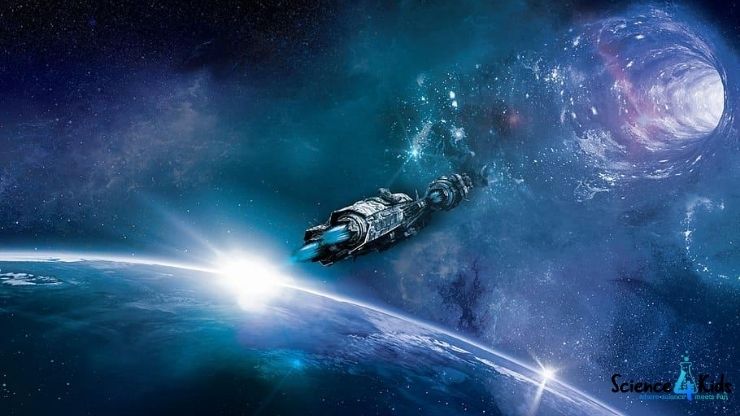There is no doubt that Interstellar is the most intricate and scientifically accurate science fiction film ever made. This was the first movie to dive into areas of quantum gravity that are still being explored. But, the problem is that no one understood what actually happened. And that is why you are reading this article isn’t it? So, here is Interstellar movie explained for those who kept wondering what was going on.
Dust Storms and blight
The movie starts from a world in the future that is being devoured by blights and dust storms. Blights are basically any plant disease caused by pathogens. Blights are perfect to bring about the end of the world, because the whole world is dependent on plants. There are two types of blights, namely generalists and specialists. The movie shows a generalist type of pathogen that affects a huge number of species of plants.
Moreover, the deadly dust storms leave the people gasping for oxygen. Professor Brand explains this by saying that our atmosphere is 80% nitrogen, which we don’t even breathe. Instead, blight thrives in a nitrogen dominated environment, which is totally bad news for the people.

Interstellar travel – The only solution
Professor Brand proceeds to say that the next generation i.e. Murph’s generation is going to starve and die. The only solution in front of them is to go out in space and look out for possibly habitable planets. In the movie, the Lazarus missions were conducted with this aim. 12 scientists specializing in different areas were assigned 12 possibly habitable planets. Out of 12, only three had reverted habitable results.
Brand said that Cooper was the best pilot he had ever seen and thus became the most capable person to venture out into space and explore the 3 planets. This decision is followed by a very emotional scene where Cooper and his daughter, who is angry with him for leaving, separate without making amends between them.
The wormhole
Here is the most confusing part, the wormhole, in the Interstellar movie explained. This is the part where we realise that Interstellar is after all science fiction. Not everything in the movie can be scientifically accurate. A wormhole, in a very skeletal manner, is a gateway or bridge through which you can navigate between two far-off places in space by hugely reducing the distance. It basically takes us to our destination through another dimension.
All this might seem very intriguing, but we need to understand one thing; wormholes are just one specific result of Einstein’s relativistic equations. They have never been seen in space, and it’s believed that we cannot build a traversable wormhole (which I will get to in a moment). Speculations have been made that only a very highly advanced civilization will be able to build a traversable wormhole. This is because of a few complications that have been explained below.
Let us consider a cross-section of the wormhole to be a U-shaped tube. Now let us make a light beam travel through it. And if this beam is able to cross, it can be considered traversable. While entering the wormhole, the light rays have been bent inward. But for it to exit from the wormhole, the light rays will have to be bent outwards. Now, gravitational bodies such as a black hole or a wormhole can only bend light inwards. To bend the light rays back outwards, we require something of negative mass or negative energy.

Thus, any traversable wormhole must be bound by particles having negative mass or negative energy. And, as hard as it may be to believe this, scientists have actually invented such particles, and termed them as exotic matter. This experiment was known as the Casimir effect. Still, it is doubtful if we would be able to get enough exotic matter to hold open a wormhole, and for light to bend outwards and escape.
In Interstellar, it has been mentioned that the wormhole was placed near Saturn by the “bulk beings.” The wormhole is a big sphere, which they enter at a very high speed, so as to provide enough momentum to go through the entire hole (since the spaceship controls fail inside a wormhole). The visual effects team for the movie does a great job in giving viewers a feel of how it would be inside a wormhole. When they are inside the wormhole, Amelia Brand shakes hands with some disturbance in the air, which she believed to be bulk beings. After a rough journey across the wormhole, Cooper and the team finally reach the other galaxy.
Miller’s planet
Miller’s planet has been made to be so close to Gargantua that the time dilation factor is huge; one hour on Miller’s planet is equivalent to seven years on the critical orbit of the black hole, where the Endurance is parked. The extreme proximity to Gargantua stimulates extreme tidal forces. These tidal forces stretch and squeeze the planet. But don’t think that it actually squeezes; the planet is just deformed.
Due to these tidal forces, we can make a fair assumption regarding the planet, which is that the planet is not quite locked on to Gargantua. Instead, it rocks back and forth due to the tidal forces. Even the Earth experiences such a force due to the pull by the moon on it. But the moon’s gravitational forces are so less, that in effect the forces nullify. And this rocking can easily explain the four thousand foot waves found on Miller’s planet. This is because the crust deforms a little bit due to the tidal forces, which cause huge waves. On Earth this can be seen as the very small waves that we see on the beaches.
There is one more factor that we have to consider; the tidal forces are huge. And if all parts of Miller’s planet are exposed to forces of this magnitude, the mantle would be pulverised, friction would heat it and melt it and as a result we would get a hot planet somewhat like Venus. But this is not what we see. So we can assume that only one side of Miller’s planet faces the black hole. Now here comes the beauty of theory. This means that the planet is not rotating on itself.
We can consider another option. And this option is centred on the concept of space whirl. The core of space whirl is beyond the scope of this article (and it is beyond your scope too if you have just started researching). What we basically need to understand is that when highly gravitational bodies or bodies under some high gravitational forces are present in space, they curve the space-time fabric around them causing a phenomenon known as space whirl.
Now, it’s not tough to imagine that Miller’s planet will have to rotate at the same speed as the space that it whirls, to make the relative velocity zero. This also eliminates the factor of centrifugal forces tearing up the planet at such high speeds; because the velocity with respect to the whirled space around it is zero. Finally, after two people of the team of Cooper, Amelia Brand, and Doyle (who died there) came back, they found that 27 years had passed at the surface. Romilly had become old and even said that he had lost hopes of ever seeing them again.
Mann’s Planet in Interstellar Movie explained
After a grave failure and a huge loss of time, the crew gears up to land on Mann’s planet. When they enter the planet, Mann’s planet is found to be extremely cold and frigid. But, for a planet this close to a black hole, icy stalactites and clouds are not possible. So, we can assume that this planet has a highly elliptical orbit, one where the planet is far away from the black hole for most of the time. There’s not many things that have to be scientifically explained for this planet.

The highlight here is when Dr Mann, the captain of the Lazarus Missions, betrayed the crew, nearly killing Cooper. Then he makes his way to the Endurance. But since TARS had disabled the automatic docking procedure, Mann had to do it manually. Since he was inept for docking, the craft didn’t lock on tightly to the Endurance, blowing off the airhole and killing Dr Mann. This is followed by an amazing sequence where Cooper docks their own craft to the Endurance, which was spinning very fast due to the explosion. The theory of the elliptical orbit is once again confirmed when TARS says that they are being pulled into Gargantua.
Into Gargantua
We see an emotional exchange between Professor Brand and Cooper, wherein Cooper mentions the honesty parameter of 90% that they had set between them. This was a reference to the point made by Cooper in the start, after knowing TARS’s setting. To save fuel and to ensure that Brand safely reaches Edmunds planet, Cooper ejects himself and TARS into Gargantua. Since the Endurance was also deep in Gargantuas horizon, Nolan was correct in depicting the downward motion of Cooper as seen from the Endurance.
Also, Einstein’s laws dictate the fact that after some time, the Ranger would freeze as seen from the Endurance. As Cooper falls, he starts experiencing the tidal forces gradually, being weak at first then becoming so strong that he had to eject. On his descent Cooper sees certain objects, which have fallen into the black hole. Note that he can see these particles due to the reflected light by the accretion disk above, and not because they are emitting their own light. This is much like how we see our Moon due to the reflected sunlight. At the edge of singularity, Coopers encounters the Tesseract.
The Tesseract
Interstellar movie explained at this part may get a little complex for the common person. But still, try to keep up. To understand how Cooper sees the different stills of Murph’s bedroom, we need to first understand what a Tesseract really is. A Tesseract, also known as a hypercube is basically a cube in four dimensions, the extra dimension being time.
The practical experience of having time as a separate dimension would be that you could step back at some point of time, and witness yourself in the future or the past. But it is obvious that we are not meant to experience the fourth dimension. Cooper does, while seeing Murph’s bedroom in different moments of her life. How the Tesseract with Cooper in it has a view of Murph’s bedroom is beyond the scope of this article. This is because the mechanics of the Tesseract involves phenomena like AdS or the Anti-DeSitter warping.
Messaging Murph
On reaching the Tesseract, Cooper takes some time to take in what he is seeing. He sees the moment he left, and tries to convey the message to Murph to not let him go, by making books fall. But he knows that it is not possible, because if Murph had managed to make him stay in the past, Cooper would have never been there.

After some time, TARS suddenly contacts Cooper to let him know that he has survived and has the quantum data required to solve the gravity equation. He tried transmitting it on all wavelengths but none of them were getting out. Cooper then realises that the only force that can transcend all barriers of space and time is gravity.
After a detailed explanation to TARS about his realisation, Cooper proceeds to find a way to message Murph. He also went to the moment of the dust storm, and made patterns of the dust so that the past Cooper can do what he had just done. Then he realises that his love for Murph is quantifiable and it’s the only way that he can transmit the message.
The watch that Cooper had given her before leaving is used as an instrument to code in the data. After it is done, TARS makes a point that the bulk beings are closing the Tesseract. Cooper then realises that the bulk beings or “they” were humans in the future itself. We humans had advanced so much in technology by then, that we had the ability to create a wormhole for the past humans. The Tesseract closes, and with whatever propulsion system that the future humans had equipped it with, it transports Cooper out of the black hole and the wormhole. On the way, he gives a handshake to the past Brand who was just coming into the wormhole (referenced in earlier paragraphs). At the end of this trip, we can see Cooper unconscious near Saturn, and a spacecraft coming from the distance.
The End
On a more personal note, I as a viewer felt that Nolan had an important message for us that he wanted to tell; which is that our system of segregation of science and sentiments is wrong. This world can be saved only by both. As always, Nolan does an amazing job with the visual effects in the film, and more importantly, in keeping the movie scientifically accurate for the most part. Obviously, all this is difficult to take in in 3 hours. But, that’s the beauty of such films; the depth to which they go is just phenomenal. With that being said, I hope you guys enjoyed reading about Interstellar movie explained, and have taken away something good from this article.
This is just the tip of the iceberg. Check out these Stellar Reads to take a deeper plunge into the realm of interstellar.
If you are a space enthusiast, you will definitely love to read more about black holes. Find it here.
Here’s Something You Might Like
As a participant in the Amazon Associates Program, Science4Kids may earn from qualifying purchases.




